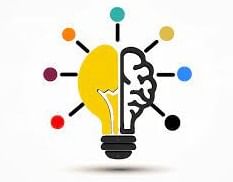Best Study Material for UPSC Exam
UPSC Exam > UPSC Notes > Class 6 to 12 NCERT Mindmaps for UPSC Preparation > Mindmap: Traders, Kings and Pilgrims
Mindmap: Traders, Kings and Pilgrims | Class 6 to 12 NCERT Mindmaps for UPSC Preparation PDF Download

The document Mindmap: Traders, Kings and Pilgrims | Class 6 to 12 NCERT Mindmaps for UPSC Preparation is a part of the UPSC Course Class 6 to 12 NCERT Mindmaps for UPSC Preparation.
All you need of UPSC at this link: UPSC
FAQs on Mindmap: Traders, Kings and Pilgrims - Class 6 to 12 NCERT Mindmaps for UPSC Preparation
| 1. What were the main trading routes during the medieval period? |  |
| 2. How did the rise of trading cities impact the economy during the medieval period? |  |
Ans. The rise of trading cities during the medieval period had a significant impact on the economy. These cities served as hubs for trade, attracting merchants and traders from different parts of the world. The increased trade led to economic growth, the development of specialized industries, and the accumulation of wealth in these cities.
| 3. What role did kings play in medieval trade? |  |
Ans. Kings in the medieval period played a crucial role in facilitating and regulating trade. They granted charters and privileges to trading cities, promoted the establishment of markets and fairs, and ensured the safety of trade routes. Kings also often imposed taxes and tariffs on trade to generate revenue for their kingdoms.
| 4. How did the pilgrimage routes contribute to the medieval economy? |  |
Ans. Pilgrimage routes, such as the Camino de Santiago in Spain or the Via Francigena in Italy, brought a significant influx of pilgrims to various destinations. This pilgrimage tourism stimulated local economies by creating a demand for services and goods such as food, lodging, and souvenirs. It also led to the growth of towns and the construction of religious sites and infrastructures along the routes.
| 5. What were the main reasons for the decline of medieval trade? |  |
Ans. The decline of medieval trade can be attributed to several factors. These include the shift of trade routes due to political and military instability, the impact of epidemics such as the Black Death, the rise of new maritime routes that bypassed traditional trading cities, and the decline of feudalism and the rise of centralized nation-states, which led to the imposition of trade restrictions and monopolies.
Related Searches






























